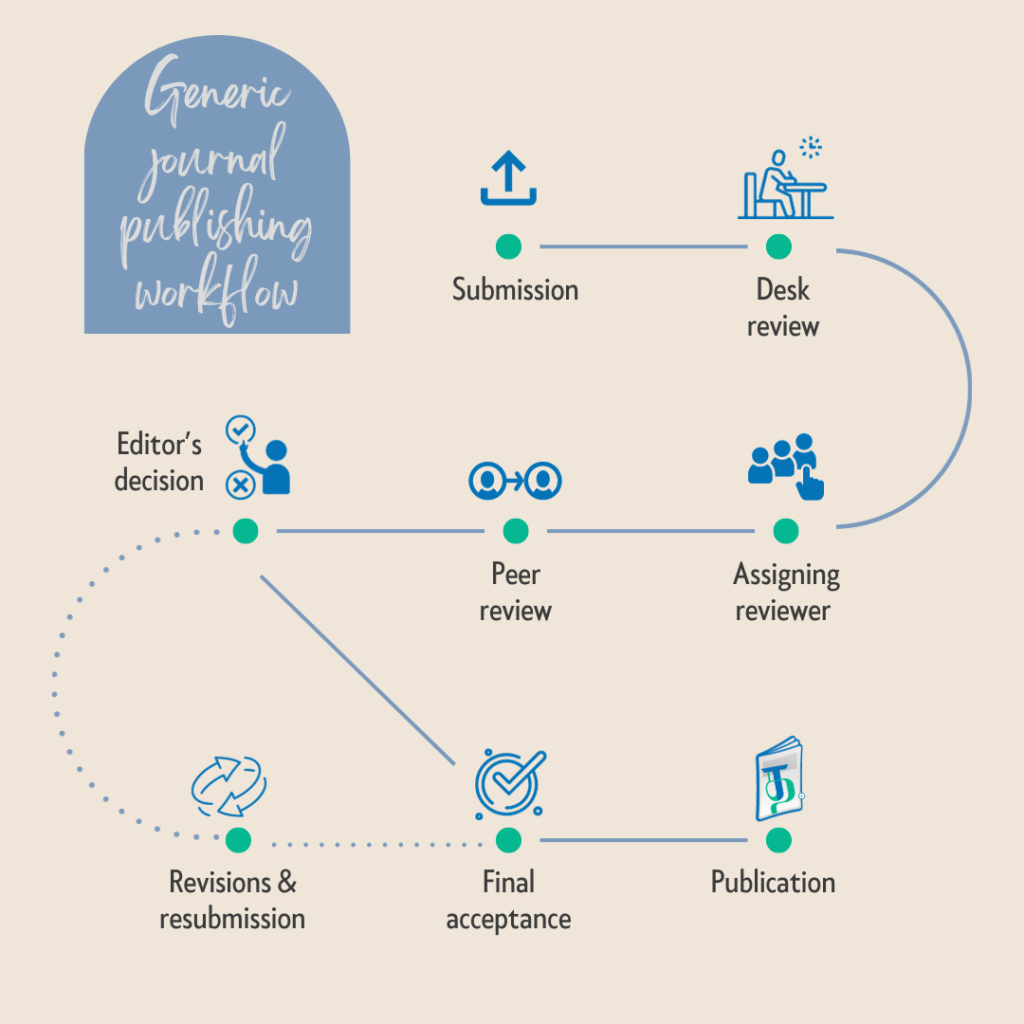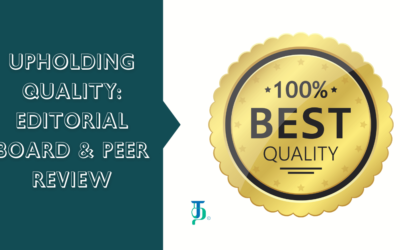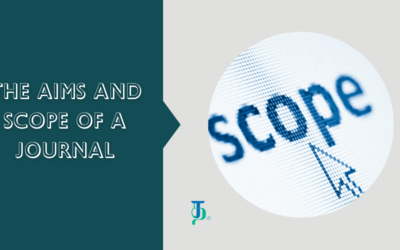According to the International Committee of Medical Journal Editors (ICMJE; p.5), peer review is “the critical assessment of manuscripts submitted to journals by experts who are not part of the editorial staff”. It is the gold standard for research evaluation and is an essential step in the publication process. The purpose of peer review is to assess the quality, validity, and originality of the research, ensuring that it meets the standards of the academic community.
Peer-reviewed articles are considered reliable sources of information because they have undergone scrutiny by knowledgeable peers. This process helps to filter out manuscripts that are not suitable for publication and to improve the quality of those that are, maintaining the integrity and credibility of academic literature.
The roots of peer review can be traced back to the 17th century, with the establishment of academic societies and journals. However, the formalized process we recognize today began to take shape in the 20th century. Over time, peer review has shaped the way research is disseminated and validated in scholarly communication.
Key Players in the Peer Review Process
Authors
Authors are the individuals or research teams responsible for conducting the study and writing the manuscript. They submit their work to a journal with the aim of sharing their findings with the academic community.
Reviewers
Reviewers play a crucial role in the peer review process. They are experts in the field who are selected by the journal’s editors to evaluate the submitted manuscript. Reviewers provide feedback on the strengths and weaknesses of the study, offering recommendations for improvement.
Reviewers carefully examine the methodology, data analysis, and interpretation of the results. They also assess the manuscript for clarity, coherence, and adherence to ethical standards.
Editors
Editors oversee the entire peer review process. They are responsible for selecting appropriate reviewers, managing the review timeline, and making final decisions regarding acceptance, revision, or rejection of the manuscript. Editors also ensure that the process is conducted ethically and in accordance with the journal’s guidelines.
Types of Peer Review Systems
Open vs. closed peer review system
In an open peer review, the identities of the reviewers and authors are known to each other. This approach promotes transparency and accountability. Reviewers may feel more accountable for their assessments, and authors can directly engage with reviewers’ feedback.
Closed peer review maintains anonymity between authors and reviewers, allowing for unbiased evaluation. This traditional approach is widely used in many journals.
Single-blind, double-blind, and triple-blind review systems
In a single-blind review, the identities of the reviewers are kept anonymous, while the authors’ identities are known to the reviewers. This approach allows for impartial evaluation and helps prevent potential biases based on authorship.
In a double-blind review, the identities of both the authors and the reviewers are concealed. This type of review is designed to eliminate any potential bias that could arise from knowing the identities of the parties involved.
In a triple-blind peer review, the identities of the authors, reviewers, and editorial board are kept hidden from each other. The triple-blind peer review is implemented to further reduce potential biases in the review process. It aims to ensure that the evaluation is solely based on the merit and quality of the manuscript, without any influence from the identities or affiliations of the authors, reviewers, or editors.
While triple-blind peer review provides an additional layer of anonymity, single-blind and double-blind peer reviews are the most common systems in the academic publishing process. The specific choice of the peer review model often depends on the policies and preferences of individual journals and publishers.
Pre-publication vs. post-publication peer review system
Pre-publication peer review occurs before the manuscript is published, ensuring that only high-quality research is disseminated. This process involves rigorous evaluation by experts in the field. Pre-publication peer review is the traditional process used by academic journals to evaluate and assess the quality of research articles before they are officially published.
Post-publication peer review is a process in which research articles are made publicly available before undergoing formal peer review. This model is typically associated with preprint servers and platforms that allow researchers to share their work with the community immediately after completion (more on this in a separate article).
The Peer Review Workflow
Submission: The peer review process begins when an author submits their manuscript to a journal. Authors should carefully read and follow the journal’s submission guidelines, which include instructions on formatting, structure, and supplementary materials. Authors are also required to provide a cover letter that briefly outlines the significance and originality of the research, as well as any specific considerations they want the reviewers to take into account.

Desk review (initial screening): Editors conduct an initial screening to ensure that the manuscript aligns with the journal’s scope and quality standards. They assess whether the research topic is relevant to the journal’s focus and whether the study meets basic ethical standards. If the manuscript passes this stage, it is assigned to one or more expert reviewers for a more detailed evaluation.
Reviewer assignment: Editors select and invite experts in the field to review the manuscript. Reviewers are chosen based on their expertise, ensuring that they have the knowledge and experience to evaluate the research thoroughly. Reviewers provide detailed feedback on various aspects of the manuscript, including the methodology, data analysis, interpretation of results, and overall contribution to the field.
Review process: Reviewers carefully examine the manuscript, paying close attention to the methodology used in the study. They assess the validity of the research design, the appropriateness of the data analysis techniques, and the accuracy of the interpretation of results. Reviewers also evaluate the clarity and coherence of the writing, offering suggestions for improvement where needed. They may highlight areas where additional information or clarification is required.
Editor’s decision: Based on the reviewers’ feedback, the editor makes a decision regarding the fate of the manuscript. This decision can range from acceptance, with or without minor revisions, to major revisions, or rejection. If revisions are requested, the editor provides specific guidance on the changes that need to be made.
Revision and resubmission: If revisions are requested, authors carefully address the reviewers’ comments and make the necessary adjustments to the manuscript. It’s important for authors to provide a detailed response to each comment, explaining how they have addressed the concerns raised. The revised version of the manuscript is then resubmitted to the journal for re-evaluation. The same reviewers may assess the revisions to ensure that they adequately address the feedback.
Final acceptance and publication: Once the reviewers are convinced that the suggested changes have been incorporated or due explanations are provided, the manuscript is approved and accepted for publication. The manuscript usually goes through the typesetting process and is published. It is common that the accepted manuscript is published online first even before it goes through the typesetting process in order to increase the visibility. After typesetting, this version is replaced with the typeset version.
Ensuring Quality Post-Publication
It’s important to note that traditional peer-reviewed journals, which follow the pre-publication peer review model, do not typically employ post-publication peer review as their primary mode of evaluation.
That being said, some journals may incorporate elements of post-publication discussion and commentary. This can take the form of letters to the editor, online comments, or community forums where readers can discuss published articles. These discussions can contribute to a broader understanding of the research and sometimes lead to corrections or updates to the published work.
Journals that do incorporate post-publication discussions usually have systems in place to ensure quality:
- Moderation: Journals may have moderators who oversee the discussions to ensure they remain constructive and adhere to the journal’s guidelines.
- Author engagement: Authors of the original work are often given the opportunity to respond to comments or address concerns raised by the community.
- Transparent guidelines: Journals provide clear guidelines for commenting and participating in post-publication discussions, emphasizing professionalism and constructive criticism.
- Peer oversight: Some platforms may have additional peer review processes in place for comments or contributions, especially if they are intended for publication in the journal or associated materials.
- Correction and retraction policies: Journals should have policies in place for correcting or retracting articles if significant errors or issues are identified through post-publication discussion.
While post-publication peer review can be a valuable complement to traditional pre-publication peer review, it’s important to note that it doesn’t replace the rigorous evaluation process conducted by expert reviewers before an article is officially published in a peer-reviewed journal.
This article is part of our special series in celebration of the Peer Review Week, 24–29 September. The theme of this year is Peer Review and The Future of Publishing. Throughout this week, we’ll explore various aspects of the peer review process, from its fundamentals to emerging trends. We hope you find this series informative and valuable. Stay tuned for more insightful articles!



